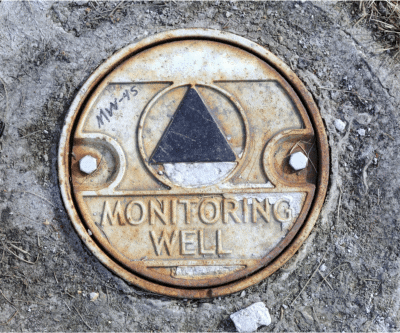STATISTICAL ISSUES IN GROUND WATER MONITORING APPLICATIONS
This webinar provides an academic overview of advanced-level statistical methods that are used in analysis of ground-water monitoring data at waste disposal facilities. The logic behind and application of the statistical methodologies is the focus of the webinar, rather than the mathematical derivation of the statistical methods. The use of quality statistical methods in environmental monitoring can more rapidly detect real impacts to the environment and are less prone to producing costly false positive results. Use of these methods in other areas of determining environmental compliance (e.g., soil sampling, assessment and corrective action monitoring) are highlighted as well.
Protection of our natural resources from the disposal of hazardous materials continues
to be a major environmental and health concern in the United States and throughout the
world.
A major concern is the impact on groundwater from waste disposal facilities. Since
both municipal solid waste and hazardous industrial waste contain constituents that are potentially
harmful to human health and the environment (although typically at very different
concentrations and likelihood of detection), this concern has given rise to regulations in
the United States requiring extensive chemical testing of groundwater quality at waste disposal
facilities (e.g., RCRA solid and hazardous waste landfills, and TSCA, PCB disposal
landfills).
The result of these new regulations is that thousands of previously unregulated facilities in the United States are now required to provide extensive geochemical assessments of groundwater on a regular basis (i.e., quarterly or semiannually) and, on each occasion, to determine if the facility has contaminated groundwater on the basis of these analytical results.
The logic behind and application of the statistical methodologies is the focus of the webinar, rather than the mathematical derivation of the statistical methods.

What is the problem?
Groundwater monitoring decisions historically have been rooted in statistical theory.
Although the methods were often inappropriate, statistics has nevertheless played a critical
role in environmental impact decisions, beginning with formal regulatory discussion of
these issues [see RCRA regulation USEPA, 1982].
The problem is technically interesting:
Given a new monitoring measurement for a groundwater monitoring well, drilled in a
particular aquifer, and analyzed for a particular substance, what is the probability that
measurement represents an effect of some unnatural source (e.g., a hazardous waste disposal facility)?
Presented this way, this problem is seen by the statistician as a problem of statistical prediction. Given a collection of historical or background measurements for the
substance from an area geographically removed from the potential source of contamination
(e.g., groundwater monitoring wells located upgradient of a waste disposal facility), what
limit or interval will contain the new measurement with a desired level of confidence
(e.g., 95% confidence)?
Although this seems to be a natural view of the problem, it took many years for USEPA and industry to acknowledge its utility for ground-water monitoring applications.
If this were the full extent of the problem, the solution would be elementary and
routine application of statistical prediction and tolerance intervals would suffice. The
problem, however, is far more complicated. Key problems involve the issue of multiple
comparisons produced by repeat testing of many monitoring wells, each analyzed for multiple constituents, censoring of often large amounts of data below detection limits, skewed distributions, and balancing false positive and false negative rates at acceptably low levels.
What you will learn:
- Develop a working knowledge of ground-water monitoring statistical methods.
- Understand the differences between statistical issues related to detection, assessment, and corrective action monitoring.
- Understand why certain statistical methods should be avoided in environmental monitoring applications.
- Develop a better understanding of regulatory issues.
- Obtain an intuitive understanding of the strengths and weaknesses of statistical approaches to environmental monitoring.
- Understand the history of statistical methods in ground-water monitoring programs.
Learn how to apply what you learn:
- Obtain a working knowledge of normal, lognormal, gamma, and nonparametric prediction limits.
- Obtain a working knowledge of confidence intervals for comparison of concentrations to regulatory standards in assessment and corrective action monitoring.
- Understand the differences between inter-well and intra-well monitoring programs.
- Understand how to incorporate "non-detects" into the statistical analysis of your data.
- Learn how to detect outliers, test for normality, and test for trend in environmental data.
 Robert Gibbons, PhD., is Director of the Center for Health Statistics and Professor of Biostatistics and Psychiatry at the University of Chicago. He is a statistician interested in the areas of biostatistics, environmental statistics, and psychometrics. Major themes in his work include development of linear and nonlinear mixed effects regression models for analysis of longitudinal data, analysis of environmental monitoring data and inter-laboratory calibration, item response theory and computerized adaptive testing, and the development of new statistical methods in pharmacoepidemiology and drug safety.
Robert Gibbons, PhD., is Director of the Center for Health Statistics and Professor of Biostatistics and Psychiatry at the University of Chicago. He is a statistician interested in the areas of biostatistics, environmental statistics, and psychometrics. Major themes in his work include development of linear and nonlinear mixed effects regression models for analysis of longitudinal data, analysis of environmental monitoring data and inter-laboratory calibration, item response theory and computerized adaptive testing, and the development of new statistical methods in pharmacoepidemiology and drug safety.
He is an elected member of the Institute of Medicine of the National Academy of Sciences and a fellow of the American Statistical Association.
He earned his PhD in statistics and psychometrics from the University of Chicago and his BA in chemistry and mathematics from the University of Denver.
A Fellow of the American Statistical Association and member of the Institute of Medicine of the National Academy of Sciences, Dr. Gibbons has written more than 200 journal articles in the areas of statistics.
 Dr. Gibbons is the coauthor of Statistical Methods for Ground Water Monitoring (2nd Edition, 2009) along with the other popular books: Longitudinal Data Analysis and Statistical Methods for Detection and Quantification of Environmental Contamination, each published by Wiley.
Dr. Gibbons is the coauthor of Statistical Methods for Ground Water Monitoring (2nd Edition, 2009) along with the other popular books: Longitudinal Data Analysis and Statistical Methods for Detection and Quantification of Environmental Contamination, each published by Wiley.
| Fee: |
299.00 USD Per Webinar
|
| Materials and Downloads: |
Session Slides (PDF)
Record of Attendance Form (PDF)
|
Number of
Participants: |
AS OF JUNE 1, 2020, WEBINARS ARE PRICED FOR INDIVIDUALS WORKING ALONE. Pricing is discounted for individual registrations for people working alone.
|
Continuing
Education
Certificates: |
$14.95 each. Official CEU certificates are available as an option. After successful completion of this webinar, a link will be provided to order a certificate.
|
| Access: |
On-demand, anytime 24/7. |
| Discounts: |
Buy 3 on-demand webinars, and get 3 on-demand webinars for free!
|
| Duration: |
90 minutes |
| PDH Earned: |
1.5 hours |
| |
|
| Instructor(s): |
Robert Gibbons, PhD. |